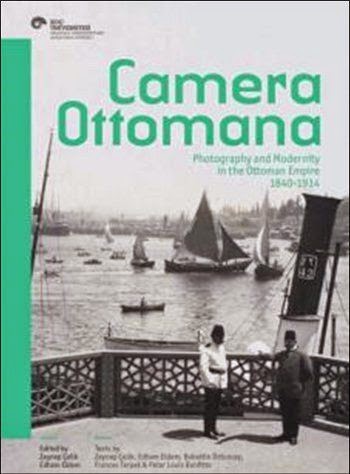Fotoğraf, 1839’da doğduğu andan itibaren hem modernitenin bir parçası oldu hem de onu simgeledi. Bu yeni teknoloji, sağladığı kaydetme ve sergileme imkanları ve taşıdığı kesinlik ve gerçeklik iddialarıyla modern dünyanın hareketliliğine sıkı sıkıya kenetlendi. Osmanlı İmparatorluğu da fotoğrafı büyük bir heyecanla kucakladı. Fotoğrafın etkisi ve anlamı, Tanzimat hareketinin modernleşme ve Batılılaşma atılımıyla birleşti. Fotoğraf, yirminci yüzyıl başında Osmanlı topraklarında günlük yaşamın, basının ve devlet aygıtının standart bir parçası haline geldi.
Bu kitap, Osmanlı İmparatorluğu örneğinde, fotoğrafla modernite arasındaki yakın ilişkinin en çarpıcı yönlerini ele alıyor. İçerdiği malzemenin önemli bir kısmı, padişahların imparatorluğunu Batılı kitlelere göstermek amacıyla ısmarladığı fotoğraflarda ve albümlerde olduğu gibi, modernitenin fotoğraf aracılığıyla sergilenmesine dair. Modernite fotoğraf sanatının bir parçası haline gelmiş, onu sıradan, alışılmış bir uygulama haline getirmiştir. Resimli basınla, aile üyelerine veya isimsiz koleksiyonculara yollanan kartpostallarla, arkadaş ve tanıdıklara verilen portrelerle, çalışanların veya mahkûmların resimleriyle, fotoğraf kamusal ve özel hayatın bütün alanlarını işgal etmeye başlamıştır.
Bugün içinde yaşadığımız görsel dünya yaklaşık 150 yıl önce doğdu. Camera Ottomana, yakın geçmişin dönüştürücü güce sahip en etkili teknolojik icatlardan biri olan fotoğrafın yerel boyutunu eleştirel bir açıdan değerlendirmekte ve önemini yansıtıyor.
* * *
From its birth in 1839, photography has participated in modernity as much as it has symbolized it. Its capacity to record and display and its claim to accuracy and truth intricately linked the new technology to the dynamism of the modern world. The Ottoman Empire embraced photography with great enthusiasm. In fact, the impact and meaning of photography were compounded with the thrust of modernization and westernization of the Tanzimat movement. By the turn of the century, photography in the Ottoman lands had become a standard feature of everyday life, of public media, and of the state apparatus.
This volume explores some of the most striking aspects of the close connection between photography and modernity with a particular focus on the Ottoman Empire. Much of the material concerns the display of modernity through photography, as was so often the case in the photographs and albums commissioned by the Sultan to showcase his empire for Western audiences. Nevertheless, modernity was often embedded in the photographic act, transforming it into a common and mundane practice. Be it in the form of images disseminated through the illustrated press, postcards sent out to family members or anonymous collectors, portraits presented to friends and acquaintances, or pictures taken of employees and convicts, photography had started to invade practically every sphere of public and private life.
The visual world we live in today was born some 150 years ago. Camera Ottomana is both a homage to, and a critical assessment of, the local dimension of one of the most potent and transformative technological inventions of the recent past.
Zeynep Çelik, Edhem Eldem, Bahattin Öztuncay, Frances Terpak & Peter Louis Bonfitto: Camera Ottomana: Osmanlı İmparatorluğu'nda Fotoğraf ve Modernite 1840 - 1914 | Camera Ottomana: Photography and Modernity in the Ottoman Empire 1840 - 1914. Derleyen(ler): Zeynep Çelik, Edhem Eldem; Çeviren: Ayşen Gür, Koç Üniversitesi Yayınları, İstanbul 2015, Türkçe ve İngilizce, 256 S., ISBN: 978-605-5250-47-8

Hiç yorum yok:
Yorum Gönder